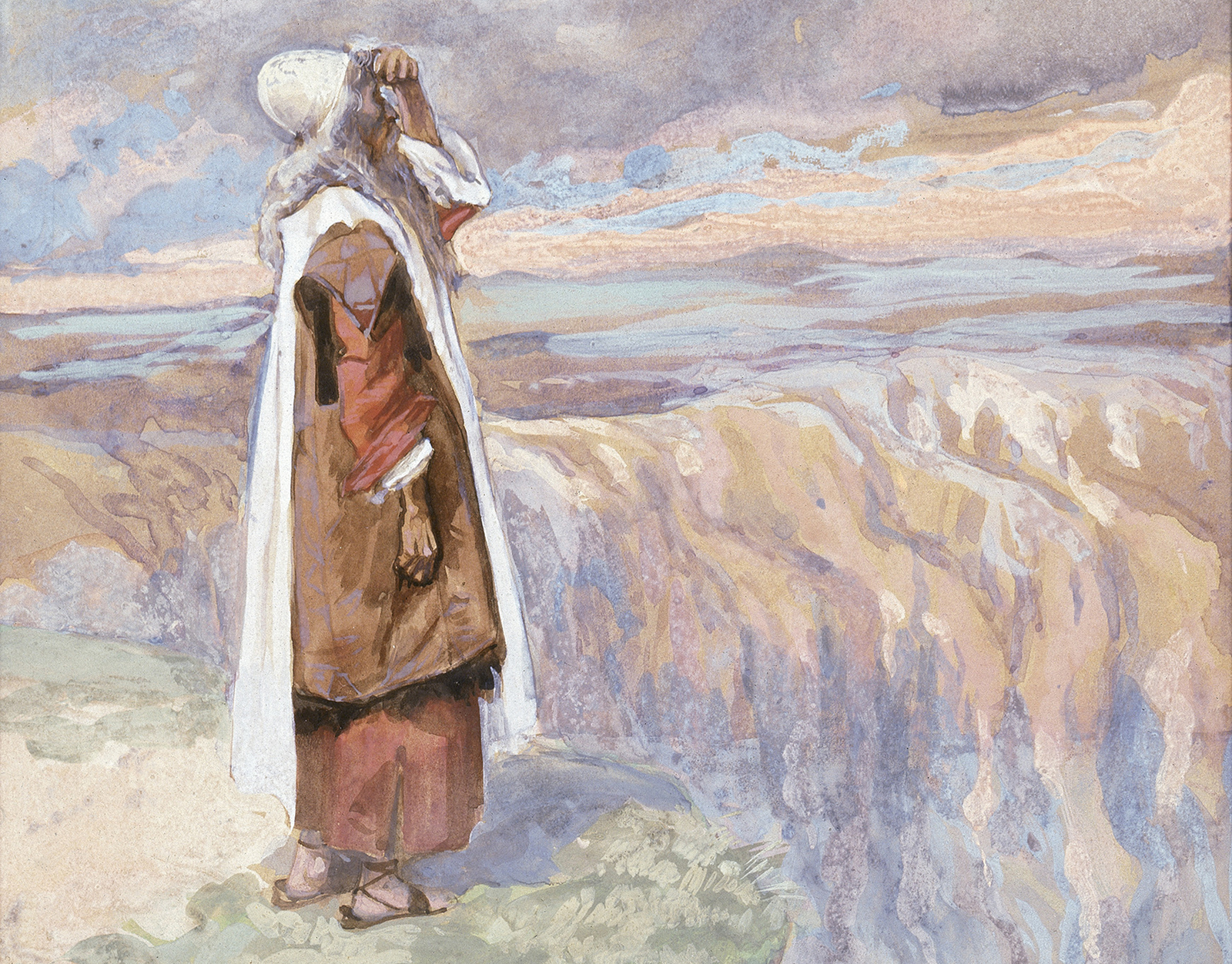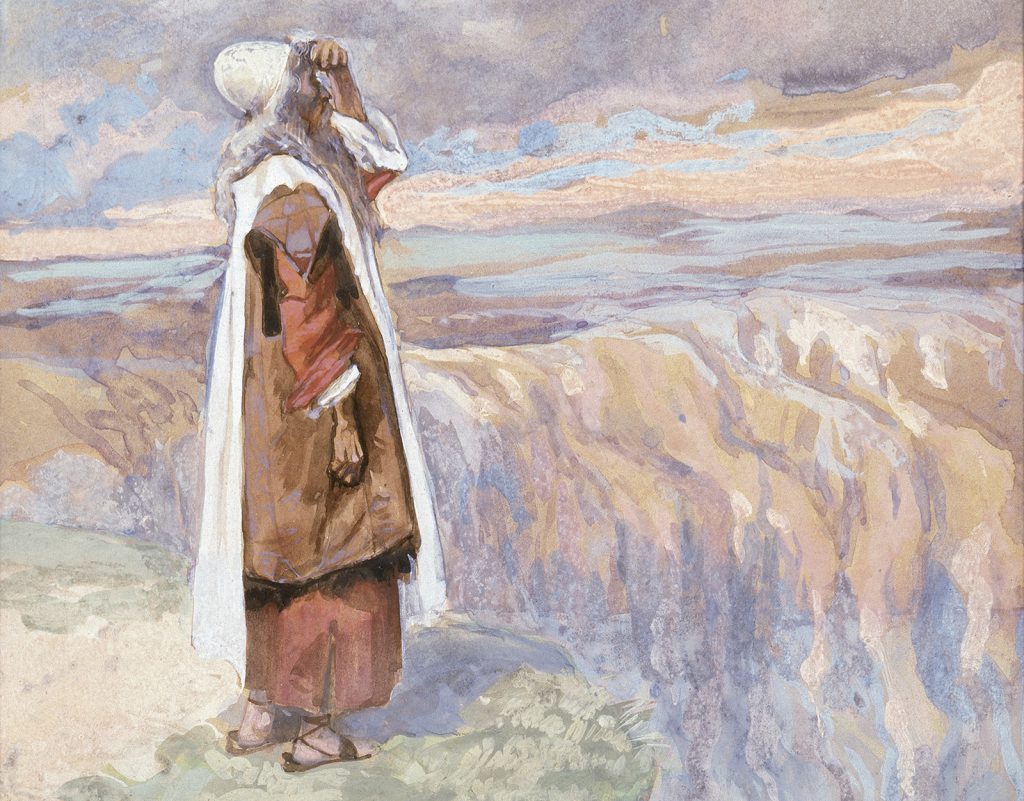
(RNS) — I don’t normally quote two family members in one article, but since this is the season of forgiveness, I hope that you will forgive me. Especially because their insights into this week’s Torah portion are not only valuable, but they touched my soul quite deeply.
The first family member is my oldest son. This Shabbat just happens to be the 25th anniversary of his becoming bar mitzvah.
As he was writing his d’var Torah, my son did a little bit of research, and he figured something out.
That long speech that Moses delivers — he delivered it on the last day of his life.
That is probably why the most prominent word in the Torah portion is ha-yom — “today” — because Moses is feeling the claws of death around him, and he senses the urgency of now. Of saying it all today.
That is the first insight. The words of the Torah portion were among Moses’ final words — to his people and to himself.
The second family member is my late cousin, Simeon Jacobs, of blessed memory.
In the words of the great Hebrew poet, H.N. Bialik, Simeon died before his time and before anyone’s time. He was a humble man who loved his family deeply and had a ready, easy laugh.
This is something that Simeon realized.
Simeon read the final words of the Torah — the words that contain the obituary for Moses — and he saw something that I, even after decades of reading those words, never quite realized.
Recall the scene. God has brought Moses to the top of Mount Nebo, which is in modern-day Jordan. God shows Moses the entire land of Israel, taking him on a panoramic sweep across its terrain.
But it is all a tease. “This is the land of which I swore to Abraham, Isaac, and Jacob, ‘I will assign it to your offspring.’ I have let you see it with your own eyes, but you shall not cross there” (Deut. 34:4).
And, what is the very next thing that we read?
“So, Moses the servant of the Eternal One died there, in the land of Moab, at the command of the Eternal One.”
All my life, this is what I have believed, and this is what I have taught — and this is what generations of Jewish teachers have believed and taught, so I have been in good company — the best company, as a matter of fact.
I have believed and taught that Moses died on Mount Nebo and that the people of Israel entered the Land of Israel without him.
This is the scene that the Rev. Dr. Martin Luther King Jr. was playing out, in real time, in the last speech of his life. In one of the most famous speeches in American history, he said to his people that he had been to the mountaintop, and that while he might not be able to get to the Promised Land with them, they would get there.
They are still on the way. We all are.
So, Jeff: are you telling us that Moses did not really die on Mount Nebo?
That is precisely what I am saying, and I am teaching this in the name of my cousin, Simeon Jacobs.
Simeon invented his own midrash on this passage, and I find it stunning in its simplicity and its wisdom.
Simeon re-read the verse: “So, Moses the servant of the Eternal One died there …”
Simeon taught that it was not that Moses died.
It was that Moses “the servant of the Eternal One” died.
Simeon believed that at that moment, the Shekhinah, the indwelling Presence of God, departed from Moses, and that what departed from Moses — the part of Moses that died — was that part of him that was eved Adonai, the servant of the Eternal One.
The part of Moses that died was his outer role, his public persona, his position. Eved Adonai, the servant of God, died on Mount Nebo.
But, ha-ish Moshe, the man Moses — he still lived, and it was the man Moses who entered the Promised Land with his people.
I must tell you more about my cousin, Simeon. As I said, he was a humble man. He was also not a professional Jew, with the exception of the joyous summers that he spent at Camp Ramah Darom in Georgia, where he worked at the waterfront.
No, Simeon was just a simple Jew — from a family that has taken Judaism seriously for generations, and from an extended family that has produced several Jewish professionals and many lay leaders of the Jewish community.
I share this with you, because I believe two things.
First, Simeon’s midrash is about many things, but it is mostly about retirement. When people retire, something inside of them dies. What dies is the job, the position, the role, and while it was the people of Israel who mourned for Moses, people who retire also mourn for those lost roles. The more essential your work has been to your being and to your personality, the harder the death.
While the people of Israel mourned for Moses for 30 days, people who retire cannot limit their lamentation for their lost roles to 30 days. But they must mourn, because it is an essential part of what it means to be human and to continue to be human.
And second: I share Simeon’s midrash with you, precisely because it does not come to us from an ancient or a contemporary rabbi or scholar. That was not Simeon.
Rather, he was, as I have said, a simple Jew who made a wonderful discovery — a discovery that had been hiding, in plain sight, within the text for thousands of years.
It took a simple Jew to be the textual archeologist — to dig it up and to dust it off and to lift it to the light.
Here is the point: The Torah was given to all Jews, and all those who seek meaning within it. It is the heritage of the entire community of Israel, of knesset Yisrael, of the Jewish people as they are embodied in prayer and in study.
As much as we might need more Jewish professionals (and we do), we also need more regular Jews like my cousin Simeon, who saw a text and playfully ran with it.
May his memory be a blessing.

